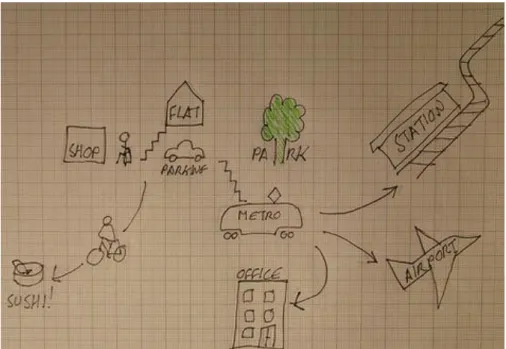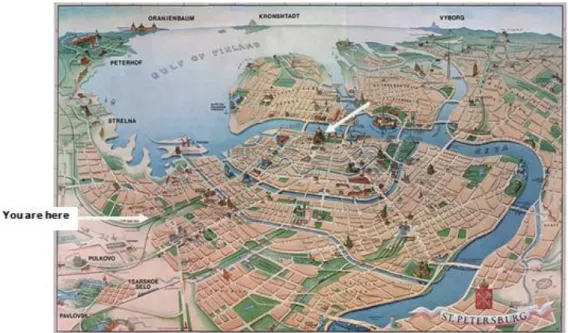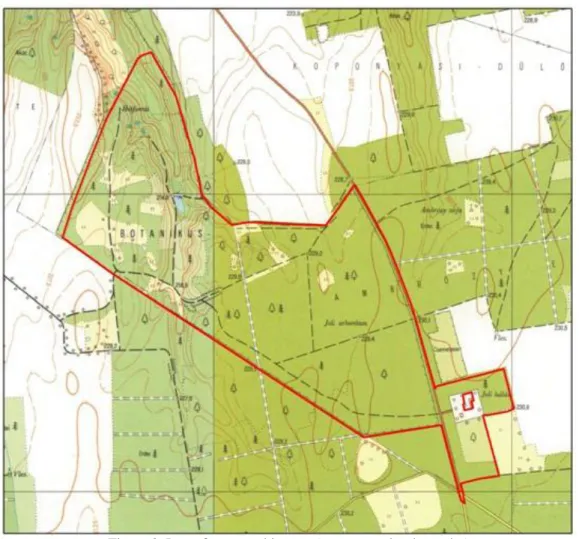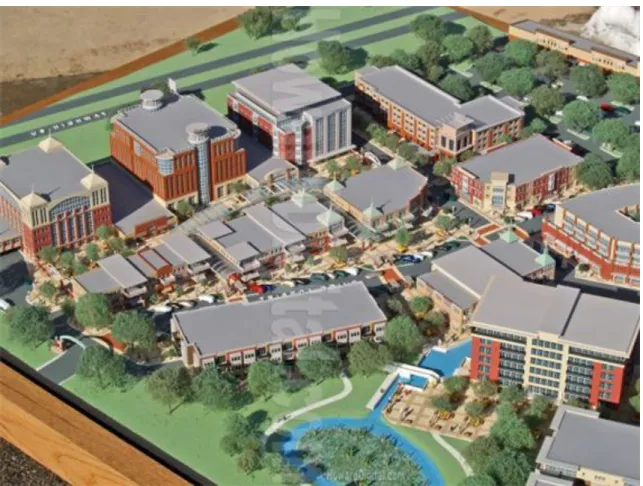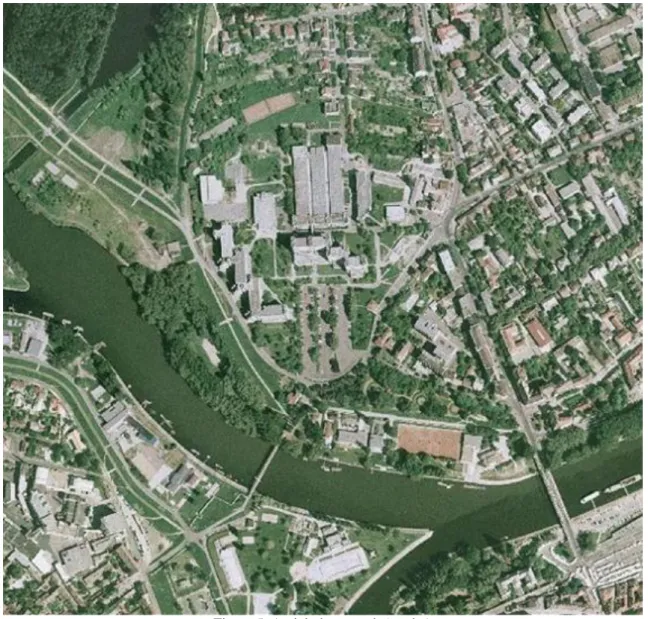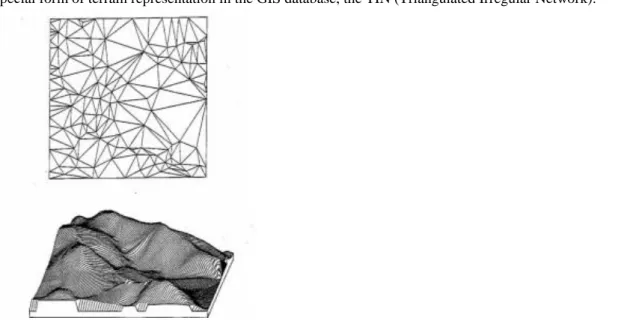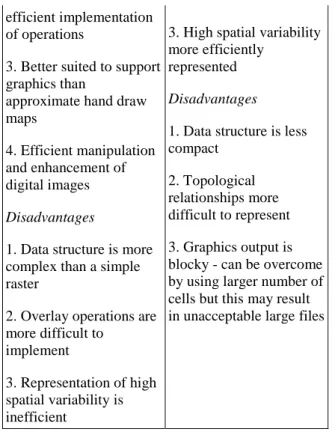Building geodatabase 1.
Geodatabase design principles
Ferenc Végső
Created by XMLmind XSL-FO Converter.
Building geodatabase 1.: Geodatabase design principles
Ferenc Végső
Lector: Szabolcs Mihály
This module was created within TÁMOP - 4.1.2-08/1/A-2009-0027 "Tananyagfejlesztéssel a GEO-ért"
("Educational material development for GEO") project. The project was funded by the European Union and the Hungarian Government to the amount of HUF 44,706,488.
v 1.0
Publication date 2010
Copyright © 2010 University of West Hungary Faculty of Geoinformatics Abstract
In this module, geodatabase principles are introduced. We are discussing about following questions: model, spatial model, building spatial model, and vector and raster spatial entities, object oriented modeling.
The right to this intellectual property is protected by the 1999/LXXVI copyright law. Any unauthorized use of this material is prohibited. No part of this product may be reproduced or transmitted in any form or by any means, electronic or mechanical, including photocopying, recording, or by any information storage and retrieval system without express written permission from the author/publisher.
Table of Contents
1. Geodatabase design principles ... 1
1. 1.1 Introduction ... 1
2. 1.2 Spatial model ... 1
2.1. 1.2.1 What is a model? ... 1
2.2. 1.2.2 Building spatial model ... 2
2.3. 1.2.3 Modeling the spatial dimension ... 5
2.4. 1.2.4 Building spatial models for the computer environment ... 6
2.5. 1.2.5 Spatial entities ... 7
3. 1.3 Representing spatial entities in data models ... 8
3.1. 1.3.1 Vector and raster spatial data models advantages and disadvantages ... 10
3.2. 1.3.2 Modeling the Object oriented (OO) way ... 14
Chapter 1. Geodatabase design principles
1. 1.1 Introduction
All the geographic information system (GIS) is the computer realized observation of the objects in the real world. This realization - which is a process - called model building. An important feature of any GIS is to represent real world in a relevant way. This is not a new thing and comes from the fact that all the special representative of the profession sees the world through "professional lenses'. If a gardener is walking in the city, he will notice first the property boundary line of vegetation. If a surveyor walks in the city, he will notice first the property boundary line as an abstract. Consequently, each model reflects to our knowledge and observations.
The first phase all geographical information system construction, to selecting the interested slice of the world, and transformation to spatial or geographic model.
Figure 1. Possible model of the reality
2. 1.2 Spatial model
2.1. 1.2.1 What is a model?
There are many definitions for the models varying as the following quote from Haggett and Chorley (1967) illustrates. A model may be defined as: „...either a theory, a law, a hypothesis or a structured idea. It can be a role, a relation or an equation. It can be a synthesis of data. Most important, from the geographical viewpoint, it can also include reasoning about the real world by means of translations in space (to give spatial models) or in time (to give historical models)” (Haggett and Chorley 1967, p. 21-22.)
As Haines-Young and Petch (1986) indicates the idea that a model is an idealized or simplified representation of reality is widely held. Every approaches attempt to simplify reality by abstracting only those parts of the real world which were thought to be essential in defining and solving the problem. In addition, a set of structured ideas has been used to develop a solution to the problem being addressed.
Spatial modeling, as the definition by Haggett and Chorley (1967) illustrates, is simply one component of the modeling process. In this process, geographical data about the spatial relationship of features in the real world are used to help us understand and address a particular problem. This might be as simple as how to get from A to B by the shortest route or as complex as a model of the atmosphere designed to simulate global warming.
Geodatabase design principles
2
Created by XMLmind XSL-FO Converter.
As Haines-Young and Petch state (1986) a model maybe as complex or as simplistic as the user requires.
However, in all cases a model is an abstraction of the real world, which provides a framework for understanding real world processes and, perhaps more importantly, planning how to manage them.
The building of models is a continuous iterative process, because as we gain knowledge about the real world from applying the model, we are able to identify the weaknesses in our model and change it. Understanding the dynamic nature of model building is important because it reminds us that using a GIS is a process, which will be open to change and review. As you revisit the way your organization handles and uses spatial information in a GIS so you will wish to adapt the model upon which your GIS has been constructed.
2.2. 1.2.2 Building spatial model
Before dealing in detail the spatial model building, let's look at three types of modeling, which are known less or more from our earlier studies: - The map - The architectural model - The aerial photographs
The map as a model
The map has used as a model for the spatial data storage and display, since the human can draw marks on a surface. The first maps drawn on the cave walls incised with sticks or charcoals. From our perspective the question is, how to use the map to display elements the real world in two-dimension space. In this figure, the map is represents, how to get to a spectacle in the town.
Figure 2. The cartographic model This figure shows an example, how to use the map as a model of reality. The sketch give an idea, how can be to get to the cathedral (arrow) from our starting point (arrow). We can imagine in advance what kind of objects we will see along the way (typical buildings), when and where to turn to the road and what buildings and landmarks will be compared to find the cathedral. If you are just a little familiar with the area and the interpretation of symbols, you will find there. This drawing is simplifies and extracts reality. In other words, the author has created a very simple but very effective model for the real world. As with
all models, the efficiency here based on the user's assumed knowledge. In the above example, the author assumes that we can read text, understand symbols, and can orient in space on the basis of the detected objects.
Assumed knowledge and the proper use of two-dimensional models is an issue that playing central role in the practical use of GIS.
For better understanding how the map works like a two-dimensional model of reality, let us observe a topographic map.
Geodatabase design principles
Figure 3. Part of topographic map (onp.nemzetipark.gov.hu)
The map uses symbols, shapes, lines, colors and text for display the elements of the real world. This map is including only „necessary” individuals, such as roads, railways, houses, rivers, flora and fauna. Every element of the map is only approach of the real features. We will do not find a tree, where on the map is drawn a wooden sign. Outline of the forest is much more complicated in reality, as seen on the map. The roads are in the correct place, but their width is exaggerated. If you measure the width of the road on the map, you get a much larger number than is realistic. Using the map assumes that we can understand how it might look like the reality by our experience. Each map’s purpose is to convey information. The type of conveyed information is changing map by map. A topographic map is an excellent example of the orientation, hiking, to organize transport etc.
The architectural model
The architectural model or any other model, which uses a third dimension to visualize the real world, is probably the easiest way to understand the spatial model. The reason is that this model is closer to the human form of approach, instead of the two-dimensional map.
Geodatabase design principles
4
Created by XMLmind XSL-FO Converter.
Figure 4. Architectural model (howardmodels.com)
You can see the buildings like in real life, their relationship to each other in space and the landscape. Recall that the criterion of the good model is the proper management of our imagination to whether we can associate to the appearance of something in the real world. The only reason why architects often criticized because of the proposed building and its environment only becomes visible after construction.
The aerial photographs as a model
The aerial photographs also representing the real world, such as maps or architectural models.
Geodatabase design principles
Figure 5. Aerial photograph (sze.hu)
The map and the architectural model convey of the real world like lines, symbols and shapes. Aerial photographs however are up different shadows, colors and shades. One of the characteristic observation is that the boundaries between features are uncertain on aerial photographs, and consist colors, shades etc. The borders on architectural model or on map are defined more precisely. Think of a sharp corner of a building or plot of land with a straight boundary line. One can wonder whether the sharp demarcation or insecure is closer to reality. The aerial photographs are a source of data used in GIS and its correct interpretation is a specific profession.
2.3. 1.2.3 Modeling the spatial dimension
All three of the spatial models we have looked at above; the air photograph, the architects' model and the map, address two dimensions of reality:
The spatial dimension; where something is located
The thematic dimension; the character of either the location or the object occupying that location and they could (if we had a sequence of them) have been used to address a third:
The temporal dimension; the comparison of data over time
In the rest of this module, we will concentrate on how GIS systems model the spatial dimension. Central to the concept of developing spatial models is the notion of capturing spatial data. Usually this is done through a process of observation and measurement. Here a problem arises because as Burrough (1987) says,
Geodatabase design principles
6
Created by XMLmind XSL-FO Converter.
„Unlike many other kinds of information handled routinely by modern information systems (computers), geographical data are complicated by the fact that they must include information about position, possible topological connections, and attributes of the objects recorded.”
Let us examine again briefly, what we mean by the term spatial data. It is useful to start with a definition of data itself. Everest (1986) provides a concise and useful definition:
„Data are 'facts' represented by values, numbers and character strings or symbols which carry meaning in a certain context.”
We can therefore consider spatial data as values, character strings or symbols, which convey to their user information about the geographical location of entities that can be observed in the real world. An additional element of spatial data is that they must have a pointer that describes their location on the earth's surface.
Probably one of the most commonly used pointers for spatial data is an address. This alphanumeric reference is used as a code to describe the location of an individual premise. Another common pointer used is the coordinate reference. Both these pointers represent spatial referencing systems. The spatial referencing of geographical data is an essential component of GIS.
As Everest's definition suggests, data need not necessarily be number or characters. They could be symbols.
Look at the simple sketch map in Figure 3. Here a set of symbols has been used in conjunction with numbers and character strings to convey location information about the location of real features.
The data and information must be distinguished from each other clearly. The data is the form of encoded information, while deducing information from the data is used in solving the problem.
2.4. 1.2.4 Building spatial models for the computer environment
The starting point for all GIS projects is what we call data model. If anyone is familiar with the database design, familiar with the concept of data model. The data model is basically a structure that the computer uses to simulate the problems. The GIS data modeling is the process, when the computer trying to solve a geographical problem. The data model can also be defined as a specific group of individuals and the general description of the relationships between individuals.
By geographical concepts the feature could be, for example, house, land or river. An important feature of the specimen is to clearly identify and distinguish it from other feature. The spatial elements of a relationship between entities in a geographical data model would be things such as proximity, adjacency, containment and direction. The important thing about entities and relationship is that they can both have attributes associated with them; for example the size of a house, how many windows it has, the number of doors, it's color, value, type of building material. The attributes of a relationship may be the units in which it is expressed. Distance, for example, may have a value in time, or meters.
As Peuquet (1990) notes many data model designers realize that data needs to be viewed at a number of levels that progress from reality, through the abstract, user oriented information structure, to the concrete, machine- oriented storage structure of the computer. The data modeling process therefore can be summarized as a series of stages in data abstraction. With table, we move further from the real world closer to the computer representation of the geographical features we wish to model.
REAL WORLD
--- Level 1 abstraction
Spatial Entities Points
Lines Areas Networks
Geodatabase design principles
Surfaces --- Level 2 abstraction
Spatial Data Models Grid (Raster) Vector Basic Spatial Unit Raster = Cell
Vector = Point
--- Level 3 abstraction Data Structure
Grid Data Structures (quadtree) Vector Data Structures (topology)
_______________________________________
COMPUTER VIEW
Peuquet (1990) suggests a fourth level to this table, the file structure, which is where information is stored physically on the computer's storage medium, be it a hard disk, magnetic tape or optical storage medium.
Strongly prevailing, the simplification and generalization (abstraction) is walking thru above levels. The three levels of abstraction provide you - as a GIS designer - with three stages, which you must complete in the construction of a GIS.
Stage one would be to identify those spatial entities from the real world in which you are interested and to decide how you intend to represent them in your model.
Stage two would be to choose one of the two spatial data models (raster or vector) which computer is able to use to display, analyze and store your entity representation of real world features.
Stage three is the stage where you instruct the computer how to recreate the entities you have identified using the spatial data model (raster or vector approach) you have chosen.
2.5. 1.2.5 Spatial entities
Points (multipoint), lines and areas
As Burrough (1987) states, all geography phenomenons can, in 2 dimensions at least, be represented by three entity types:
• Points, multipoint
• Lines
• Areas
For example you could have produced an area which represents a tennis court, a series of lines which represented a river and a group of points which represents the location of trees. The only additional piece of information required by the computer to communicate what each of these entities represents is a tag saying what each feature is.
Note that when we group these entity types together what we are in fact producing is a very simple map. Thus by adding labels and titles to our entities drawn from the image we can, using the computer, create a very simple annotated map model.
Surfaces and networks
Geodatabase design principles
8
Created by XMLmind XSL-FO Converter.
A network can be thought of as a series of interconnecting lines along which there is a flow of information.
There are several visible networks in our world. One obvious one is the road network along which there is a flow of traffic. Another would be the path network in the park along which there is a flow of animals and people.
Another entity type is a surface. A surface can be defined as a continuous entity for which at any point or location there is a measurement or value that can be quantitative or qualitative. Surfaces can be used to represent population density, elevation and temperature.
Problems with the entity definition
There are a number of problems associated with simplifying the complexities of the real world into five basic, two-dimensional, building blocks. These include; the dynamic nature of the real world, the scale at which a particular problem needs addressing and the identification of discrete features.
The dynamic nature of the real world
The real world is infinitely complex and constantly changing. It is not easy to decide to select adequate representation for entities. . For example, is it best to represent a forest as a collection of points (representing the location of individual trees), or as an area (the boundary of which defines the territory covered by the forest)?
The second problem is one of change over time. For example, when will be forest (polygon) from some scattered grooved trees (points)?
Scale
In this case, the scale is not a question in the traditional sense, but rather the extent of the spatial database and harmony of the mapping of the individuals (data density). If the environmental database covering the whole of Hungary is to be established, the settlements could be likely to point. Moreover, on the survey base maps the roads plotted as a polygon, regardless of its width, because for accounting purposes, each property is a separate plot. The ideal model, of course, would be nice to portray of individuals in full details, regardless of the extent of the database. However, the hardware-software environment today does not allow this, and perhaps not even desirable.
Identification of discrete features
In fact, real world features simply do not fit into the character of the models available. For example, if we choose to represent a forest as an area feature, where should we place the edge of the forest? Do forests have edges? The forests have edges, when we are capturing forest border from the paper map, where this boundaries are clearly marked. However, is this a true boundary? The fuzzy nature of the entity definition process becomes a very real problem when the GIS is used in the context of an application. For example, sharply raised the question if the farmers are entitled to tax relief in proportion to the forestation. Mapping of the individuals is also required careful consideration. The inappropriate classification may make impossible of subsequent analysis. For example, it is impossible to make territorial operations with line – like represented roads. The ability to change an entity from one type to another is an important component of the GIS toolbox.
The next step is to create a logical model, when substituting the real world object, with a feature. In the example above, we are substituting wood piece with a closed polygon. Finally, the last step we create a physical model, i.e., to plot the coordinates of the polygon in the computer.
3. 1.3 Representing spatial entities in data models
„The human eye is highly efficient at recognizing shapes and forms, but the computer needs to be instructed exactly how spatial patterns should be handled and displayed.”
Burrough (1987) p. 17.
This quote from Burrough reminds us that computers are still unintelligent and require instructions on how to perform specific tasks. In particular, they need to be discussed how to turn data about entities into graphical representation. This process is the second stage in designing and implementing a data model. It is the Level 2 abstraction. At present, there are two principle ways computers can handle and display spatial entities. These are most frequently referred to as the vector and raster approach.
Geodatabase design principles
The two types of representation living side by side in practice. We cannot say that one is "better" than another is. The correct approach is to define their duties in the model selection. This is not an easy task, there is no ready recipe, for a lot of experience is required. The decision meant no limit (or - or), because the same feature may appear in a database in vector and raster form too.
During the development of GIS have also raised the need for analysis and representation of the third dimension, as many three-dimensional phenomenons are influenced by the terrain. For mapping the surface developed a special form of terrain representation in the GIS database, the TIN (Triangulated Irregular Network).
Figure 8. The concept of the TIN (http://www.csiss.org/learning_resources/content/good_sa/)
In order to easing the decision regarding the reproduction of features, we have compiled a table to compare the vector to raster, and TIN.
Vector Raster TIN
The focus of the model
Vector data is focusing on modeling discrete features with precise shapes and boundaries.
Raster data is focused on modeling continuous features and images
TIN is focused on efficient
representation of a surface. The surface can represent elevation, concentration or other quality.
Source of data Aerial photography, GPS receivers, digitizing maps, vectorized raster data, contours from triangulation, reduced from survey field data, imported from CAD drawing
Aerial photography, satellite image, rasterized from vector data, scanning maps, converting triangulation
Aerial photography, GPS receivers, importing measured or digitized
elevations, converting from contour lines
Storage Points as Y,X coordinates, lines as connected paths of Y,X coordinates, polygons as closed line segments
Lower left coordinate of the raster, cell height and width, and row – column position of each cell in the
Each node in a triangle has an Y,X coordinate value
Geodatabase design principles
10
Created by XMLmind XSL-FO Converter.
raster.
Feature representation
Points represent small features (zero dimension). Lines represent features width a length but small width. Polygons represent features that have an area.
Point - like features represented by single cell. Line features represented by a series of adjacent cells with common value.
Polygon features represented by a region of cells with common value.
Z values determine the shape of the surface by heights.
Ridges or streams represented by break lines. Areas of exclusion (i.e. lakes) define polygons with the same elevation.
Topological behavior
Line topology keeps track of which lines are connected to a node. Polygon topology keeps track of which polygons are to the left and right sides of a line.
Neighboring cells can be quickly located in the raster.
Each triangle is associated with the neighboring triangles.
Geographic analysis
Map overlay Buffer generation Polygon overlay Spatial query Address locating Network analysis
Spatial coincidence.
Neighborhood analysis. Surface analysis Distribution analysis. Minimum cost path search.
Elevation, slope, aspect calculations.
Contour derivation.
Volume calculation.
Profiles and alignments.
View shed analysis.
Map
representation
Vector data is best for drawing precise shapes.
Raster data is best for representing images and continuous phenomena with gradually changing attributes.
TIN data is best for rich presentation of surfaces, especially in a three
dimensional perspective.
In summary, designing a data model for a specific GIS application involves:
1. Identifying those phenomena, which influence our application.
2. Deciding how we should represent these features as spatial entities.
3. Adopting a spatial data model, which best suits our purpose.
4. Choosing a data structure which meets with our data storage, processing and analytical requirements.
3.1. 1.3.1 Vector and raster spatial data models advantages and disadvantages
Maffini (1987) states that the raster - vector approach are two alternate methods for storing and representing spatial phenomena. As models, they have relative strengths and weakness for describing conditions in the real world. In this section, we will explore some of their strengths and weaknesses.
Geodatabase design principles
Advantages and disadvantages identified by Burrough
Vector Method Raster Method
Advantages
1. Good representation of phenomenological data structure
2. Compact data structure
3. Topology can be described completely with network linkages 4. Accurate graphics
5. Retrieval, updating and generalization of graphics and attributes are
possible.
Disadvantages
1. Complex data structures
2. Overlay several vector polygon maps or polygon and raster maps can be difficult
3. Simulation is difficult as each unit has different topological form
4. Display and plotting can be difficult to establish
5. Technology is
expensive particularly for sophisticated software and hardware
Advantages
1. Simple data structure
2. Overlay and
combination of mapped data with remotely sensed data is easy
3. Various kinds of spatial analysis are easy
4. Simulation is simple as each spatial unit has same dimensions
5. Technology is cheap and being energetically developed
Disadvantages
1. Volumes of graphic data
2. Using large cells to reduce data volume means phenomenological recognizable features can be lost
3. Crude raster maps are less beautiful than maps drawn with fine lines
4. Network linkages are expensive
5. Projection
transformations are time consuming unless special algorithms are used
Advantages and disadvantages identified by Aronoff
Vector Model Raster Model
Advantages
1. More compact data structure than raster model
2. Efficient encoding of topology therefore more
Advantages
1. Simple data structure
2. Overlay operations easily and efficiently implemented
Geodatabase design principles
12
Created by XMLmind XSL-FO Converter.
efficient implementation of operations
3. Better suited to support graphics than
approximate hand draw maps
4. Efficient manipulation and enhancement of digital images Disadvantages
1. Data structure is more complex than a simple raster
2. Overlay operations are more difficult to
implement
3. Representation of high spatial variability is inefficient
3. High spatial variability more efficiently
represented Disadvantages
1. Data structure is less compact
2. Topological relationships more difficult to represent
3. Graphics output is blocky - can be overcome by using larger number of cells but this may result in unacceptable large files
IGISE (1991) groups the advantages and disadvantages identified above into five generic themes:
• Data Volume
• Topology queries
• Generality
• Analytical capability
• Accuracy and precision
These themes are used here to develop the debate about choice of a spatial data model as part of the design process.
Data volume
One of the most frequently discussed areas in the raster vector debate is data volume. During the 1970s and the first half of the 1980s the data storage issue was at the very forefront of the raster vector debate. The article by Calkins (1990) provides a summary of some of the more general issues affecting spatial data volume and has been provided as background reading for this section. Now, however, with the increase in processing power with even the most basic of desktop Personal Computers and the fall in the cost of data storage, the data storage debate is starting to become less of an issue.
Figure 9. File sizes for raster and vector models
Geodatabase design principles
The file sizes show that in both SPANS and IDRISI the vector version of our image is much smaller than the raster equivalent. You should note, however, that in the case of SPANS the use of a quadtree data structure substantially reduces the data storage required for a raster image.
The problem is that the answer to this question is not simply that raster data sets are larger than vector data sets.
It depends upon the character and complexity of the spatial entities you are trying to record. A simple or complex raster for example can require as much data storage space to record a simple spatial entity with few polygon boundaries as it would take to record a complex spatial entity with many polygon boundaries. In the same way an unstructured vector file without topology for a series of 50 complex polygons can be much smaller in size that a fully topological vector data structure for the same area.
Topology queries
As IGISE (1990) states, it is the ability to ask questions such as: where is something? what is next to something?
what is contained within something? which is an important prerequisite of a GIS Project. The ability of the different data models to provide answers to these questions is of vital importance to the designer of a GIS project. Both the raster and vector spatial data models have strengths and weakness associated with answering different types of spatial questions. For the moment, it is enough to note that traditionally, vector data models have been considered more appropriate for answering topological questions about containment, adjacency and connectivity. However, with the advent of more intelligent raster data structures such as the quadtree, which contain information about the relationship between cells in the image, two particular spatial queries can now be performed efficiently using a raster data model. These are identifying the nearest neighbor of a given point and identifying the area in which a point is located. In general, however, where topological queries are likely to constitute the major application of the GIS a vector data model is required.
Generality
In a GIS project, it is frequently necessary to be able to change the scale and thematic resolution of operation.
This often makes it essential to be able to generalize the complexity of spatial features. For example, it might be necessary to have the ability to dissolve 500 enumeration districts into 14 wards or 200 detailed soil polygons into 15 general soil units. Depending upon the type of generality the vector and raster data models possess different relative advantages. The vector data model for example, handles changes in scale much more easily than its raster counterpart, with regard to the visual representation of entities. This is because of the precise way in which information is recorded as a set of x, y coordinates. Changes of scale pose a problem in the grid world if a resolution is requested below the size of the cell specified at the outset of the project. Increases in scale in the raster world are typified by the appearance of a blockier image. On the other hand, in generalizing the actual form of an area and of surface entities the raster model comes into its own because to aggregate a complex soil class map into a more general one needs only the value of each cell to be reclassified to reconstruct the new image. While this is possible in the vector world, it requires complex calculations of the intersection and adjacency of polygons with similar attributes. Therefore, if many calculations of this nature are required a raster data model may be more appropriate.
Accuracy and precision
You may often hear a vendor of a vector GIS based product announcing to his/her client that their product is more accurate at representing spatial features because it employs the vector spatial data model. This statement provides a good starting point for looking at accuracy and precision because it highlights one of the most common mistakes made when comparing raster and vector data; the confusion of the terms accuracy and precision. Before we proceed, it is necessary to define what we mean by the terms.
Accuracy is the faithfulness with which our spatial entity is represented in our computer view of the real world including its location (spatial accuracy) and character (attribute accuracy).
Precision is independent of accuracy and is the degree or exactness used to record the location and character or our spatial entity. For example, a typical vector based GIS allocates eight decimal digits of precision to each of its coordinates and many allocate 16 (Goodchild and Gopal, 1990). The level of this precision is much higher than the accuracy of typical GIS data. Therefore, what the vendor really meant in the above case is that the vector data model is more precise at reproducing the shapes and lines that we are used to seeing on our traditional paper map model of the world. This is because the paper map uses a vector data model to represent spatial entities. The location of small entities are shown as points, roads and rivers by lines and areas of forests by polygons with a distinct boundary. Therefore, if we use a vector GIS to capture this data, it will be more
Geodatabase design principles
14
Created by XMLmind XSL-FO Converter.
precisely reproduced than in the raster world where the points would appear as cells, the roads and rivers as jagged and stepped linear features and the areas as blocky irregular entities rather than the smooth boundaries that are formed by the arcs of the polygon.
At first appearance it might appear that our vendor is indeed right that the vector GIS is much more accurate that an equivalent grid based system. To understand why this is not the case we need to revisit our definition of accuracy and look closely a concept of faithfulness of representation. The first important point to recognize is that all spatial data are of limited accuracy. IGISE (1990) and Goodchild and Gopal (1990) provide passages to illustrate the point.
„Consider for example two air photo-interpreters who are evaluating the boundary for a wooded area. They are likely to produce two different boundaries. Branches of trees, for example, overlap one another. The overhang and overlap can easily be several meters. Depending on the season in which the photograph was taken (i.e.
whether or not the trees are in leaf), the boundary line may be drawn differently.”
IGISE (1990)
„The area labeled „soil type A” on a map of soils is not in reality all type A, and its boundaries are not sharp breaks but transition zones. Similarly, the area labeled „population density 1,000-2,000/sq.km” does not in fact have between 1,000 and 2,000 in every square km, or between 10 and 20 in every hectare, since the spatial distribution of population is punctiform and can only be approximated by a smooth surface.”
Goodchild and Gopal (1989)
Now, if we return to our vendor, what she/he should have said was that a vector GIS is more precise in representing a spatial entity as it appear on a map (which is a vector spatial data model itself). It is necessarily not more accurate than a raster GIS at representing the location and character of the true real world spatial feature. Because an entity takes on a jagged, blocky or stepped appearance it is not correct to assume that the database is inaccurate. In addition, many users of GIS consider the blocky irregular boundary produced between areas when a raster data model is used to be more appropriate for representing the real world features where distinct boundaries between spatial phenomena are not present. (Module3-Spatial data modelling. UNIGIS 1995)
3.2. 1.3.2 Modeling the Object oriented (OO) way
By the development of GIS, the way of mapping and modeling of the individuals has changed. GIS-based modeling began to approximate the relational database management methodology. In modern terms, a GIS database is an object-oriented relational database, which will have a special data type, namely the spatial (geographic) data type. In the following, we will deal with the object-oriented (OO) modeling. However, as a full understanding of the OO requires grounding in database theory and techniques.
The earlier sections of this module have explored in some detail the methods used to develop computer based geographical representations of the real world.
However, such approaches are too naive for modeling the complexities of the geography of the real world. Ask yourself, can we really view the world as a set of points, lines and areas? Is it not surprising when we talk to senior management about polygons, rasters and networks that their immediate response is to become hostile and defensive. In addition, are we naive enough (we must be because so much work is done in this manner) to assume that the complex processes can be modeled using such a simple set of spatial entities. However, there are two companies, which claim to have developed OO GIS systems. One is the LaserScan Inc. What the OO approach suggests is that we should stop thing about these real world features in an abstract manner, as points, lines and areas and think of them as true objects, about which we can store much more information than geometry, topology or a few descriptive attributes. For example, because real world objects are usually classified into groups the OO paradigm requests information about the classes to which an object belongs. The important thing about class membership is that it can take one of two forms. That, which reflects the real world behavior of the object and that, which provides information about how the object is to be treated in the computer world.
Literature
Geodatabase design principles
Abel D.J. - Smith J.L., : A Data Structure and Algorithm based on a Linear Key for a Rectangle Retrieval Problem. Computer Vision, Graphics and Image Processing, 1983
Everest G.C., : Managing Data in Organizations IN Database Management Objectives, System Functions and Administration. London, McGraw-Hill, 1986
Goodchild M.F. - Gopal S., (Eds.),: Preface IN Accuracy of Spatial Databases, Taylor and Francis, London, 1989
HMSO,: Report of the Committee of Enquiry, chaired by Lord Chorley, 1987
Mather P.M., : Data Representation section 1.3 in Chapter 1 and Introduction to Computers IN Mather P.M., Computer Applications in Geography, Chichester, 1991
Mather P.M.,: Locational Data section 2.3 in Chapter 2 Computers and Geographical Data IN Mather P.M., Computer Applications in Geography, Chichester, 1991
Peterson, J. - Platt, J. : What Good are Objects to GIS Users Who Are not Programmers? 1993
Raper, J.F. - Kelk, B., (1991) : Three-dimensional GIS IN Maguire D.J., Goodchild M.F. and Rhind D.W. (Eds) 1991
Reeve, D.R. (1994) : Module 4: Attribute Data, Postgraduate Diploma in GIS. 1994
Robinson A.H., Sale R., Morrison J.L., Muehrcke P.C., : Elements of Cartography. (5th edition), John Wiley Sons., 1984
Samet H.,: Applications of Spatial Data Structures: Computer Graphics, Imaging, Processing and Other Areas.
1989
Worboys, M.F., Hearnshaw, H.M and Maguire, D.J.,: Object-oriented data modeling for spatial databases IN International Journal of Geographical Information Systems, 1991
